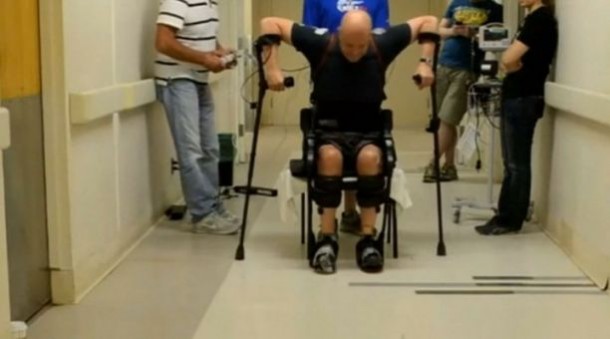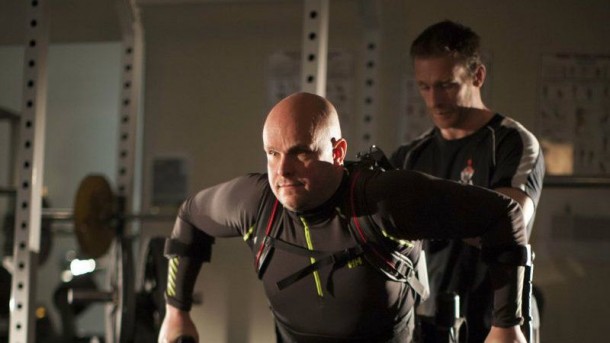Complete paralysis patients are those who cannot control either of their limbs. Typically, their lives are spent under the care of one carer or another, and they are entirely dependent on them from food to sanitary arrangements. It is a condition of utter helplessness and cases of recovery have been exceedingly rare. So, we have to turn to aiding technology to help them regain some independent movement. Engineers at UCLA have turned to robotic exoskeletons to help paralyzed people move on their own.
In a recent experiment at the University premises, they attached such a frame to a physically challenged man using a non-invasive stimulation procedure to give controls to his spinal cord. With the help of this incredible application of exoskeletons, this stricken man can now walk and do some activities voluntarily. The technology, however, isn’t completely out of the blue as recently five paralyzed people had been able to move their legs with the help of exoskeletons in a prequel research of the technology. Now, it has been extended to include the whole body!
Mark Pollock, the lucky man who was selected as a test subject for this new aiding technology has gained some voluntary movement after extensive training with electrical simulations spanning two weeks. Pollock wasn’t paralyzed since birth; rather he had suffered from it nearly four years ago. He was given five days training on the exoskeleton itself and afterwards, some muscle building was required to make the simulation possible. Regaining mobility through this technique has never been easy, but it has been achieved with some level of success. This new development shows that these exoskeletons result in enhanced cardiovascular function and improved muscle toning as well.
The system is battery powered, and it is essentially the combination of such a system and a non-invasive neurological simulator that can trigger leg movements through signals from the brain. Pollock displayed incredible progress in such a short space of time. He may get even better as time progresses. Due to the intensity of the training, his heart rate shot to 139 beats per minute which is a very good sign since it enhances his cardio-vascular action that had been lying dormant in recent times after his paralysis. It was a very exciting and emotional moment for the guy as he used to be an athlete and broke his back in a second-storey fall. He had fared deserts and polar ice caps in the North as part of a ultra-endurance races, and he also rowed professionally in Commonwealth games winning his country several medals too. He can’t get enough of the new skeleton, and he hopes it adds more functionality to his limbs in particular.
In order to monitor Pollock’s progress, a new neurological based sensing system was designed to record the level of his voluntary control over the apparel. It compares the voluntary motion of the test subject with the amount of assistance being provided by the attachment. It is a way to motivate Pollock to push harder and achieve more control over his actions because if the control drops, the body becomes passive, and improvement is halted.
During the experiment, it was shown that the former athlete was able to lift his left leg up and turn his knee joint all on his own which is an excellent sign that more control could be achieved. Maybe in the future, he can actively assist the robot in all kinds of movements. It would be a new hope for all people around the world who have partial or complete paralysis. So, it would give them a new life altogether by assisting their voluntary movement reclamation. So, if you are suffering from a terrible condition like this, there is lots of hopes for you to be normal again!




